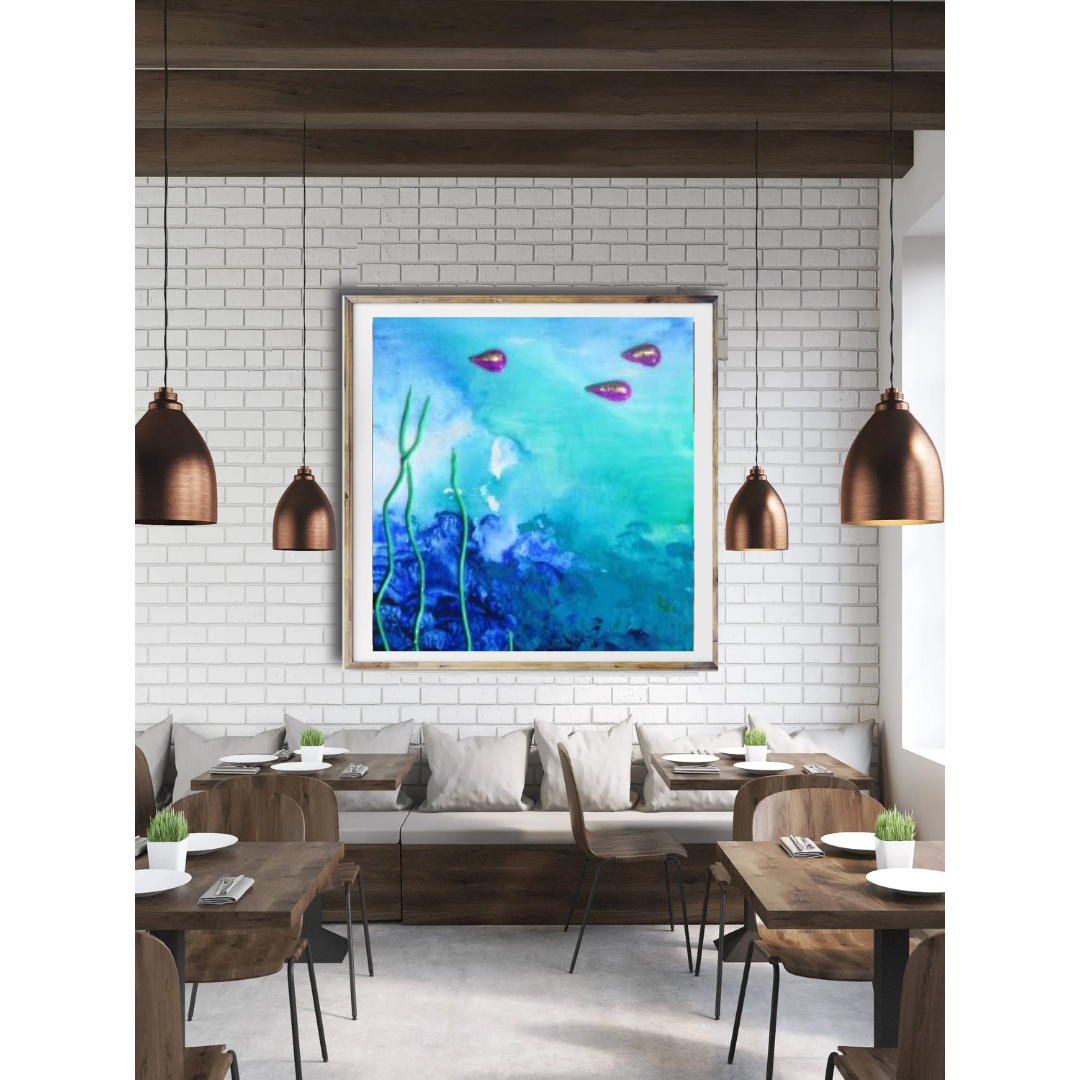Balancing Art Studio Time with Life or a ‘Real Job’
Category : Arts

As a fellow artist, I personally know it can be a challenge finding the right balance between your studio time and other aspects of life. Whether you have a full-time job, a busy social life, or simply need time for yourself, it can be difficult to make room for your artistic pursuits, or simply to get pieces finished. I know this from personal experience as I’ve two other businesses, besides of that of my art business – and yes, I do have a life. 😊 In this blog, I’m going to share some tips and strategies to help you effectively balance your studio time with the rest of your life.
How to Balance Studio Time with Life
Schedule Creative Time
Whether you operate as a business, or have another job, or simply want a life outside your studio, you need to schedule your time to be creative and get work done. Now I know for some ‘creatives’, the concept of scheduling might turn you cold; you create when the urge grabs you. If you’re a professional artist, you may not have that luxury of being able to pick and choose. You might have a gallery event in x months and that’s a hard deadline. I know an artist who creates pieces which make perfect gifts, so naturally leading up to Christmas, she has a tonne of work. She mentioned to me the other day she was falling asleep with a paint brush in her hand! The thing is, if you are a professional, chances are, once you sit down, you’ll get into it anyway. So, schedule your time. It might be certain days of the week, or potentially mornings are dedicated to creating, leaving the afternoon for admin, marketing, emails or other aspects of your life. If you ‘lose hours’ you may need to schedule personal time, exercise time or set alarms to actually stop working and take the dog for a walk and begin making dinner. Don’t forget to schedule time for admin, bookkeeping and marketing too.
Work out your Priorities
For some this can be easy, for others it might be harder. You might be drawn to working on something which you like more but it’s not the piece which is due in a week’s time. If you are operating as a professional artist, have deadlines or produce for the public, perhaps as pre-ordered products, then you will have deadlines. Find a system which works for you. If you are visual, then a whiteboard up in the studio listing the items due and their deadlines might work. Alternatively, if you get online orders, it might be a case of printing them off and having the most recent sheet on the bottom – so you know the one on top is the oldest and needs to be done first. You may run a spreadsheet. Work out what is more important and action that first. Rather than thinking about the 54 things to create, just focus on # 1 … get that done. Then move to # 2 etc.
Be Realistic About Your Goals
This is another time management strategy. How many times have you thought – that will take me 3-4 hours? Afterwards, if you were tracking your time, you discover it actually took 7 hours. Everything almost always takes longer. If you want to finish say 5 pieces before Christmas and you’ve 10 weeks, don’t think “Well, I’ve got heaps of time” … I’ll start ‘later’. I wouldn’t even think, great that’s a nice even 2 weeks per piece. I would, in fact, install a decent buffer and say I’ve got 5 weeks (remembering people will want their gifts before Christmas eve) so aim for one a week.
Setup your Work Space
Having a dedicated studio space can make a significant difference in your ability to work effectively and create balance between work and life. Whether it is a spare room, a corner of your living space, or even a separate studio, having a designated area where you can work on your art can help you establish a routine and maintain focus. Personally, I converted part of my garage, because I am working with messy products and due to the nature of resin, it’s best worked in open spaces with heaps of great ventilation. Make sure to set up your studio in a way that accommodates your creative process and promotes productivity – plus also meets your needs. Don’t forget also to make it a place you want to work, that is, aesthetically appealing. If clutter stunts your creative side, then ensure the space is tidy, organised and inviting.
Say ‘No!’
Learning to say ‘no’ is so important and valuable in creating a healthy work-life balance. While it may be tempting to say ‘yes’ to every social invitation or take on additional work commitments, it is essential to evaluate whether they align with your priorities and goals. Remember that it is ok to say ‘no’ and prioritise your studio time. Communicate your boundaries to others and value and protect your time. Particularly if you are working from home, be sure friends and family know when you’re being creative, you’re working, not just ‘playing around in your studio.’ In my other business, I do a lot of work with time mastery and setting boundaries is a big aspect of time mastery. If you value your time, you’re more likely to meet deadlines and then more likely to not be so stressed. Saying ‘yes’ to a further work commitment just puts undue stress on yourself and may potentially let down the other person if you end up not meeting the deadline. That, in turn, reflects negatively on your reputation – so sometimes a ‘no’ actually is good for business.
Be Time Efficient in all Aspects of Life
There are lots of ways to be time efficient. It might be making the most of other time, such as sitting on the train and doing some sketching or planning. It might be updating social media whilst you wait for the kettle to boil. Working in blocks is also time-effective. Perhaps turning your phone to silent to avoid distractions or interruptions.
Cleaning up at the end of each day, believe it or not, actually saves you time. A tidy workspace, where everything is in its spot, not only makes for a tidy mind, and allows the creative juices to flow, but it means you’re not ‘falling over yourself’ searching for things, or wasting time hunting for that correct shade of blue paint. I love having drawers for everything, and I’ve even got my paints, separated according to colour groups.
So, next time you’re working, make a mental note (even better, write it down) and see where you’re wasting time; somewhat of a time audit. Once you know what’s stealing your time, then you can work to implement strategies to combat that.
Remember to Take Regular Breaks
While it may seem counterintuitive, taking regular breaks from your work can improve your productivity and creativity. Overworking yourself can lead to burnout and a lack of inspiration. In fact, it might even kill the ‘creative juices’. Allow yourself to take breaks and engage in activities that recharge your energy and stimulate your mind. Whether it is going for a walk, reading a book, or spending time with loved ones, these breaks can help you maintain a healthy work-life balance and prevent creative fatigue. This goes back to step 1 above – schedule time. Now, having said that, a break every 5 minutes for half an hour might just be a tad too much. 😊
Seek Support
Finding support and accountability can really assist in balancing studio time with other aspects of your life. It ensures you have a network of people who understand your struggles and can provide guidance or encouragement. Also, it holds you accountable, pushing you to prioritise and manage your time effectively, leading to a healthier work-life balance. Consider joining an artist community or connecting with fellow creatives who understand the challenges you face, or reach out to a business coach, like myself, who specialises in supporting, guiding and providing accountability to clients in many areas, including artists. You can share your goals and challenges with them, and they can provide encouragement and advice. Just ensure your ‘accountability partner’ has the same goals as you and won’t actually draw you away from your objectives.
I hope these tips have been useful; if you’d like to get any business coaching as an artist, talk to me or visit www.donna-stone.com.au or if you’re interested in looking at some of my art … click here.
